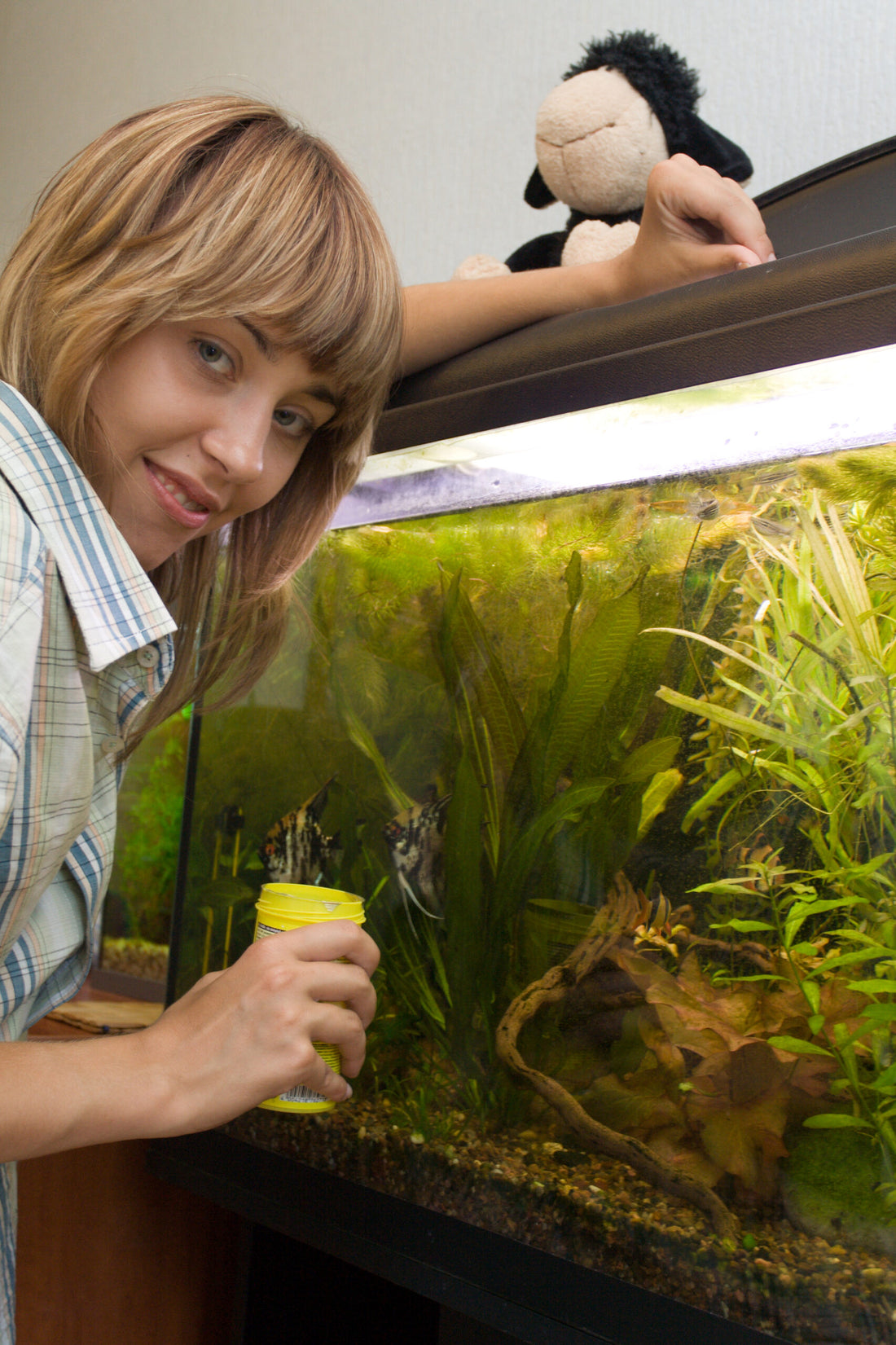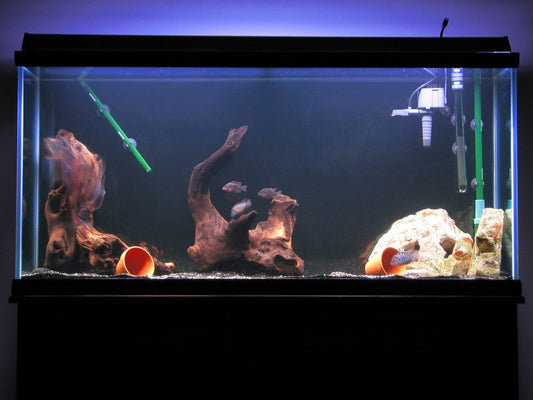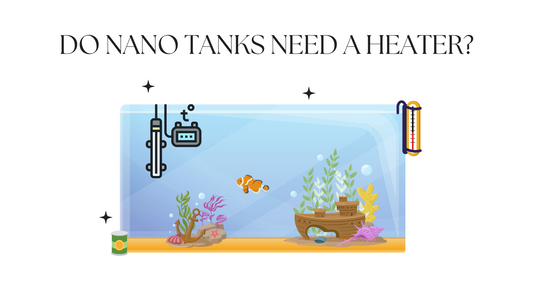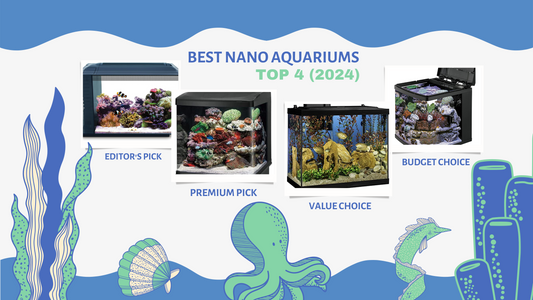Amazing
How to Fight 9 Types of Algae in Fish Tank

Algae in a fish tank can be a major problem for your aquarium. It can start to grow very quickly, and take over the tank if it is not treated. Algae is a type of plant that can grow in water, and it can be very harmful to your fish if it is not treated.
In this blog post, we will discuss what algae is, why it may start to grow in an aquarium, and how to fight the different kinds of algae. We will also provide some tips on how to prevent and get rid of algae growing in your tank!
What Is Algae?
Algae is one of many types of aquatic plants. It can come in many different shapes and colors, including green, brown, and red. Algae typically thrives in environments with too much light, high nutrient levels, and warmth. In an aquarium environment, algae can start to grow very quickly if the conditions are right, causing algae overgrowth you’ll want to get rid of.

Why Does Algae Grow in Aquariums?
Aquarium algae can start to grow in an aquarium for a number of reasons. The most common cause is too much light, which can create an algae problem. Additionally, overfeeding your fish and insufficient water changes can also contribute to algae growth. Finally, there may be other environmental factors such as temperature, pH levels, and nitrate/nitrite levels that can also cause aquarium algae to grow.
Types of Aquarium Algae & How to Fight Them
There are several different types of algae that can start to grow in an aquarium.
Here are six common types of algae and tips on how to fight them:
Green Algae

This is the most common type of algae, and it can be controlled with regular water changes and reducing the amount of light in the tank. We also would suggest adding algae eaters to your tank, which may help with prevention. You can also use chemical treatments such as algaecides to reduce green algae growth.
Brown Algae
Brown algae are usually caused by a lack of nutrients in the water, so adding a balanced fertilizer can help reduce this type of algae growth. Additionally, lowering the temperature and increasing circulation can also help prevent brown algae from growing.
Green Water Algae

Green water algae is a type of algae caused by high levels of dissolved nutrients in the water. It can be very difficult to remove because it looks like a cloudy green film on the surface of the tank. Too much lighting is often the cause. A UV sterilizer can help reduce the amount of green water algae, but if the problem persists then you may need to do larger water changes and use chemical treatments such as algaecides or phosphate removers (make sure to check your phosphate levels before).
Hair Algae

This type of algae is very common and usually found on rocks or substrate, and it can be difficult to remove manually. Reducing the amount of nutrients and light in the tank can help to prevent this type of algae from growing. If you are dealing with Hair Algae, try reducing the amount of light in your tank and changing the water. If that doesn’t work, using UV sterilizers or chemical treatments is often a helpful way to fight hair algae.
Blue Green Algae

While often described as algae, Blue Green algae, or now known as cyanobacteria, is actually a type of bacteria and it can be dangerous for your fish if not treated quickly. It is a frustrating organism to deal with, often coating substrate, plants, and the walls of your tank.
While non-chemicals solutions are always best, initially try to reduce feeding and light in addition to frequent water change. If that does not work, the best way to treat blue-green algae is with chemical treatments such as algaecides or copper sulfate.
Red Algae
Red algae typically grow in areas with low flow, so increasing circulation in the tank can help reduce this type of algae growth. You may also need to use chemical treatments or add more oxygen to the water if necessary.
Spot Algae
Spot algae is a type of algae that typically appears on the glass and decorations in an aquarium. It can be removed manually by scrubbing the glass, but you may also need to use chemical treatments if the problem persists. More often than not, if you clean your tank consistently this spot algae shouldn’t be a problem.
Blanketweed
This type of algae usually grows in areas with high levels of phosphates and nitrates, so water changes and reducing the amount of food you give your fish can help to reduce blanketweed growth. Additionally, using chemical treatments or algae-eating fish can also be helpful in controlling this type of algae.
Black beard algae

Black beard algae, sometimes known as algae bba, is usually caused by high levels of phosphates or nitrates in the water, so performing regular water changes and reducing the amount of food you feed your fish can help to reduce this type of algae growth. Additionally, adding some floating plants to the tank can also help reduce black beard algae growth.
Black beard algae is a difficult form of algae to remove, one common suggestion is targeted application of an algicide or hydrogen peroxide.
How to Prevent Algae in Fish Tank
In addition to treating the different types of algae, there are also some steps you can take to prevent it from growing in the first place.
Among the things you can do:
- Regularly check and adjust water parameters such as pH level, temperature, and nitrate/nitrite levels
- Be careful not to overfeed your fish
- Make sure the tank has adequate circulation
- Reduce ammonia levels by performing regular water changes and vacuuming substrate
- Keep light levels low and away from direct sunlight if possible
- Use aquarium-safe chemical treatments to reduce the growth of algae
- Add aquarium-safe plants to compete with algae for nutrients
Best Algae Eaters
If you’re having trouble controlling algae in your aquarium, adding some algae eating fish can be a great solution. There are several species that are particularly good at controlling algae growth and keeping your tank clean and healthy.
Some of the most popular options include Siamese Algae Eaters, Otocinclus Catfish, Bristlenose Plecos, Amano Shrimp, and Nerite Snails. These types of fish and inverts will help keep your tank clean by eating excess algae that may start to grow. They will also help to maintain the water conditions in the tank since they produce very low levels of waste.
Live Plants
Live plants are a great way to help control the growth of aquarium algae. Not only do live plants look beautiful and add oxygen to the water, but they can also compete with algae for nutrients such as nitrates and phosphates, which can limit the amount of algae that can grow. Live plants also help keep the tank clean by providing shelter and food for beneficial bacteria, which help break down organic matter and uneaten food that algae would otherwise feed on. Additionally, live plants also help to keep water quality high as they absorb carbon dioxide and release oxygen through photosynthesis.
Some of the best live plants for controlling algae include Anubias, Java Ferns, Hornwort, Water Wisteria, and Java Moss. Adding live plants to your aquarium will not only help reduce algae growth but also make it more aesthetically pleasing as well.
Frequently Asked Questions About Aquarium Algae
Is algae good for aquarium?
No, aquarium algae is not good for the health of your aquarium. Algae can lead to oxygen depletion, decreased water clarity, and even fish death if left unchecked. Aquarium algae can also cause an algae bloom, which can produce toxins that are hazardous to fish and other aquatic life.
Is algae harmful to fish in tanks?
The true answer is it depends. Aquarium algae can be harmful to fish in tanks, but it also is a naturally occurring part of aquatic life. Algae blooms can produce toxins that can cause health problems for the fish and other aquatic life. Additionally, algae make it difficult for oxygen to reach the fish and live plants, which can lead to decreased water clarity and oxygen depletion.
How do I get rid of algae in my fish tank naturally?
There are several natural methods to remove and control aquarium algae. Some of these include adding certain fish that are algae eaters, such as Siamese Algae Eaters or Otocinclus Catfish, regularly changing the water in your tank, reducing light exposure, and increasing circulation in the tank. Additionally, you can add live plants to consume the nutrients that feed algae growth. Finally, you can use ultraviolet sterilizers or aquatic algaecides to remove and control the algae in your tank.
What kills algae immediately?
The most effective way to kill algae immediately is with an aquatic algaecide. Aquatic algaecides are chemical treatments that are specifically designed to kill algae quickly and effectively. It’s important to follow the directions on the package carefully, as some algaecides can be toxic to fish and other aquatic life if used improperly. Additionally, these treatments may not completely eliminate the algae in your tank, so be sure to follow up with other methods of control.

Conclusion
By following these tips, you can help keep your tank free of algae and ensure a healthy environment for your fish. With the right preventative measures in place, you can enjoy a beautiful and thriving aquarium.
The key takeaway from this blog post is that it’s important to understand why algae may start to grow in an aquarium and how to fight different types of algae. Additionally, taking preventive steps such as regularly checking water parameters, not overfeeding fish, and using aquarium-safe chemical treatments can also help keep your tank free of algae. By following these tips, you’ll be able to create a healthier environment for your fish and enjoy a clean aquarium for years to come.
Algae eaters are a great natural way to prevent and treat aquarium algae, and often are some of the fish with the most fun personalities to keep. Don’t worry about algae in your fish – they eat it naturally!
Lastly, live aquarium plants such as floating plants can also help reduce algae growth in the tank by reuding excess nutrient levels in your aquarium water. By using live plants, you’re not only helping to keep algae down but you’re also adding beauty and oxygenation to your aquarium!






comment